
Yes, it is yet another jumping spider! I can’t get enough of these little dynamos. I found this little one on a flower and brought it into the basement in the hopes of getting some good macro shots. I really miss seeing these guys during the winter. Every spring I get excited when the first ones show up. Now I’ll bore you with some of the reasons I find jumping spiders so interesting…
This particular specimen is a Dimorphic Jumper. They are named dimorphic from the Latin for “two-forms” because the male and female don’t look alike. Jumping spiders are ambush hunters, using incredible vision to actively stalk their prey. Unlike the more familiar orb weaving spiders, jumpers don’t build a web to live in or to hunt, though they drop safety lines of silk when jumping to protect themselves from injury if something should go horribly wrong. They apparently have more sense than some (human) free climbers! Jumping spiders don’t use silk to wrap their victims, but they use it to construct small tent-like structures to molt and overwinter. Some species also use these structures as a dining room, dragging back their quarry for a peaceful meal.
Jumping spiders are from the family Salticidae, from the Latin word for “jump.” They have amazing leaping abilities, especially when you consider that their athletic feats don’t originate from huge limb muscles like a grasshopper’s legs but rather by the rapid manipulation of hemolymph in their limbs like a hydraulic system. Hemolymph is the arthropod’s blood equivalent, but it is copper based (hemocyanine), rather than iron based (hemoglobin). They truly have blue blood…well, at least when the hemocyanine is oxygenated. Otherwise it is clear. Unlike hemoglobin in vertebrates, the hemocyanine isn’t contained in blood cells; these respiratory proteins travel on their own in the hemolymph through tubes in the spider’s body. Fascinating little critters.
Jumping spiders have fantastic vision. In fact, almost no other arthropod has higher visual acuity. Some great links about jumping spider vision can be found on the Tree of Life Project. Jumpers are daytime hunters relying on their excellent vision to capture prey. It is also critical for finding a mate… without mistaking them for dinner. Most jumping spiders have developed elaborate courtship dances to correctly identify spiders of the same species. It has been shown that some can even see in color! That isn’t much of a surprise since numerous species are so fantastically colored.
Do yourself a favor and check out the Peacock Jumping Spider. It is a perfect example of a truly beautiful spider with spectacular coloration and fascinating behaviors. It’s hard to not think about spiders a little differently after seeing these beautiful and captivating arthropods!


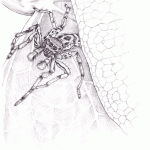
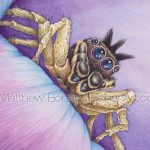
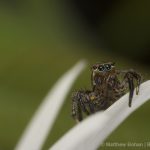
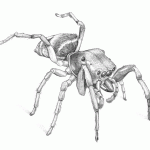
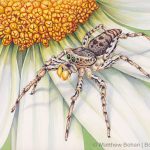
Leave a Reply